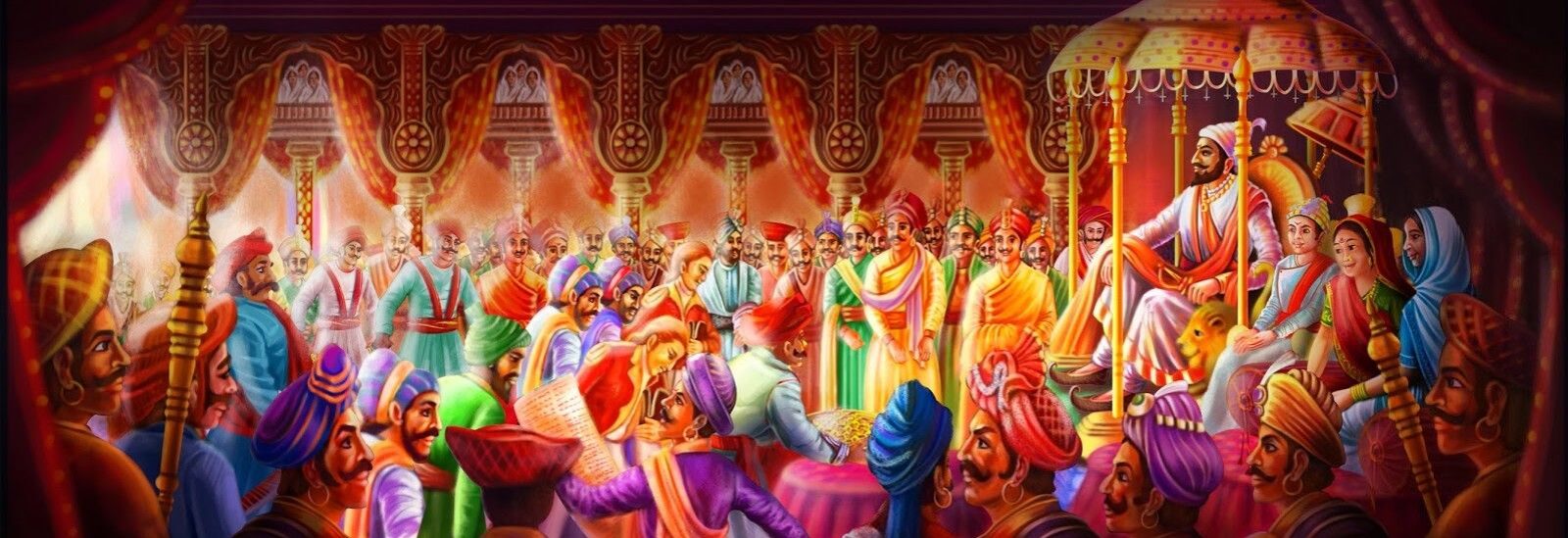‘Shivakal’ is the another name of ‘Heaven’, because of simple living conditions, few needs and contentment and joy in small things as well as affection, humanity and finding happiness in all things. But because of the foreign power, this heaven had become a hell.
As far as lifestyle is concerned, agriculture was the main occupation of the people of that time. Living with pride was the standard of living then. Then there were mud or dung or kuda (grass) houses. Men used to wear dhoti and beat on the head. A rich mustache and some beards were kept. He was wearing cotton clothes.
Generally, women used to wear Navari and baravari sarees but poor women who can’t afford it, used to wear polka parkar (indian top and skurt). The women of the royal family used to wear Navvari and Baravari sarees which are still valuable like Paithani. Now, sarees are available in three types i.e. Sahwari, Navari and Baravari. The difference between them is that the sahawari means a small saree compair to other two type of sarees, and barawari saree is the bigger one amongst the remaining two type of sarees. Katha Padra’s saree etc. saree used to be worn by rich people or women of dignitaries like Sardars and Subhedars. Also, ornaments were worn according to their ability. Women used to wear a veil on their head. Being in limit of culture and ritis was a strict rule then. Strength and courage to work limitlessly were the characteristics of the men and beauty and character were the characteristics of the women at that time.
It was a simple rule then that men should serve the king or join the army or do traditional business or agriculture and women should do housework. Some bad practices like going to sati were practiced at that time. But Maharaj forcibly stopped many such bad practices. Caste was a very important part during this period. Maharaj cleared the biggest bug in the society like caste discrimination. But some bad guys still keep it going. Tattvas / strict principles are the soul of every human being.
At that time, man headed family system has well established in Maharashtra. The eldest man in the house is the head of the family and everyone respects him. Joint family system was prevalent at that time. The birth of a boy was considered a celebration while the birth of a girl was considered a calamity. Because when the girl grows up, she will go to a other’s house, and parents will have to pay dowry in her marriage to opposite side. There was a belief and practice in those days that raising a girl would cost parents so much and she would leave for someone else’s home, putting the father and the family in more expenses and debt. But the son is the lamp of the house. At that time, there were beliefs and customs that if he was brought up, he would get a lot of dowry in his marriage, Lakshmi would be blessed at home, his family would grow, he would support his parents and yes, after the death of his parents, all their religious rituals should be performed by the son. It was a male dominated society at that time. But now we see that men and women are equal. Yes, but this change is not complete yet. Men looked after all the transactions, rituals, ceremonies etc. but a woman had to take the permission of the head of the house to go to her before marriage house. Just as everyone had equal rights over the income of the house, so also everyone had equal rights over the household responsibilities (Here ‘all’ means ‘males’ only). However, the authority over the income of the house and responsibility in the house were more on the eldest son. It was not acceptable to the court at that time to give the watan/estate of family given to the son-in-law or to the adopted child.
Every person in the family get good thoughts, respect for elders, humility and gentleness and love for children. The son did not sit in his father’s presence without his permission. Marriage is decided by the family. Girls should be married at their appropriate age. Inter-caste marriage was also considered forbidden. Kundli Milan, family background, caste, gotra, pravar and status are given utmost importance while deciding marriage instead of giving the preference to the choice of the boy and girl. A man was allowed to remarry but a woman was not. But in some castes the boy had to pay dowry to the girl. But it causes that groom family has bought the bride and even if she dies after marriage, bride’s family are considered to have no right over her.


Pingback: Life Style (Part II) - Chatrappati Blogging